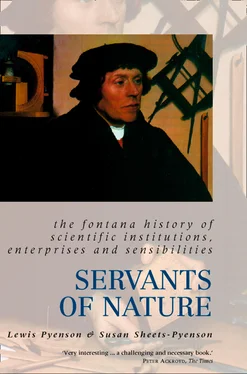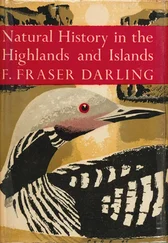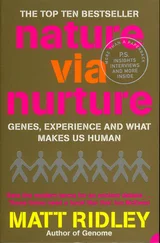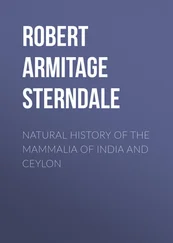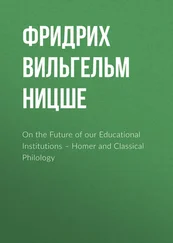1 ...6 7 8 10 11 12 ...29 Institutions with a teaching function began to take shape, emphasizing the search for knowledge of nature, with the result that the contentious ethical-political side receded into the background. A pupil of Aristotle’s successor Theophrastus, Demetrius Phalerius (ca.345–293 BC), deposed as dictator of Athens, went to the Egypt of one of Alexander’s generals turned potentates, Ptolemy I Soter; there Ptolemy, acting on Demetrius’s advice, founded the institute for advanced study known as the Museum of Alexandria. The name suggests a secular temple for receiving inspiration by the muses, the nine avatars of arts and letters (including astronomy) in classical antiquity. Though under the direction of a priest (until Rome imposed a supervisor) and with their material needs overseen by curatorial staff, the Museum’s fellows were free to study what they liked. They lived sumptuously at the king’s expense. They had outdoor galleries and lecture theatres for learned discussions, and they ate in a large dining hall. Attached to the Museum were a botanical garden and what became the largest library of Mediterranean antiquity, the Serapeum. The prestige of the Museum made it a magnet for scientists throughout Hellenistic and Roman times – Euclid (fl. ca.295 BC), Apollonius of Perga (fl. ca.200 BC), Aristarchus (ca.310–230 BC), Eratosthenes (ca.276–ca.195BC), Archimedes (ca.287–212 BC), and Hero (fl. AD 62) all resided in Alexandria for longer or shorter periods. Museum fellows could and did take on pupils – the grammarians Dionysius Thrax of Alexandria (fl. AD 40) and Apion (fl. AD 30) are traditionally held to have studied there under Didymus (b. 63 BC). Scholars generally found it a safe haven from political storms. The Museum was the nerve centre of a cultural community that we would find today in places like the Cambridges.
The Museum inspired copies at the administrative centres of Antioch, Ephesus, Smyrna, Seleucia, and Rhodes. The Attalids of Pergamum in Anatolia (in modern Turkey) imitated the Alexandrian example by creating a medical school and magnificent library, an environment of learning that centuries later nurtured the Pergamum native, the famous physician Galen (ca.129–ca.200). A second-century contemporary of Galen’s, the great thinker Claudius Ptolemy (ca.100–ca.170, not related to the royal family) held a professorship at the Alexandrian Museum, part of the small number of chairs in philosophy that Egypt’s nonresident monarchs, the Romans, had financed. After AD 200, however, the Museum began to lose some of its intellectual centrality, despite the extraordinary achievements of Ptolemy. Galen’s writings suggest as much, because he visited the Museum and wrote disparagingly about its physicians. Alexandria’s Museum – with its hundreds of thousands of rolls of books and its heritage in speculative philosophy, with its tradition of high-table meals and sparkling dinner conversation – is a distant mirror of twentieth-century universities. It is difficult to say how much was left of the library and its intellectual circle when Caliph Umar, following a tradition of book burnings stretching from the pre-Socratics through the early Christian zealots, ordered a perhaps largely symbolic purification by fire in AD 646.
Although the ancient museums appear much like the best of our universities today, their line to the present is broken. The medieval arts and philosophy faculties in Europe were not exactly corporations for generating new knowledge; indeed, they owe more to secondary-school instruction in antiquity than they do to the academies and museums. In their final form the seven liberal arts (the quadrivium: arithmetic, geometry, astronomy, and harmonics or music; and the trivium: grammar, rhetoric, and dialectic or logic), which formed the base of medieval university instruction, may be traced to schools of the first century BC. By the imperial Roman period, however, in the schools that retailed these liberal arts, literary studies overwhelmed natural sciences. Like their European successors, Hellenistic and Roman engineers, surveyors, and sailors learned their craft apprentice-style.
The schools of higher learning at Athens, Rome, and elsewhere (or rather, the collection of professors of grammar, rhetoric, law, and medicine at these locations) continued into the sixth century AD, when they were extinguished by Christian fanaticism or barbarian neglect. But the classical tradition nevertheless survived for a thousand years, in Constantinople. Between 425 and 1453, diverse classically inspired schools provided the administrative elite of Byzantium.
The warriors of the Fourth Crusade turned their attention to the conquest of Byzantium. They sacked Constantinople in 1204 and then set about to conquer the outlying provinces. The first Latin emperor of Byzantium, Baldwin I, asked Pope Innocent III to send professors from the University of Paris to found a Latin institute in Constantinople. Innocent agreed to the plan. Also in the thirteenth century, Paris founded a Collegium Constantinopolitanum, designed to lodge and train a score of Byzantine clerics. When Michael Paleologus recaptured Constantinople in 1261, he revived higher learning by appointing George Acropolita (1217–1282, a politician, general, and historian, whom he had freed from prison) to the chair of Aristotelian philosophy. Acropolita also served as ambassador to Rome, effecting a reconciliation of sorts between the eastern and western churches. Twelfth-century Europeans knew about classical learning thanks to hundreds of years of translation from Arabic, but Aristotle entered the fledgling European universities on the tide of Greek learning that issued from Byzantium. It is possible that the notion of European faculties of higher learning – variously guaranteed by church and state – derives from Byzantine precedent.
Eastern cultures
Learned colleges appeared in other ancient civilizations, such as South Asia. The end of the Vedic period in India, about 500 BC, saw the emergence of a wandering brotherhood of secular teachers, the vadins. They codified their teachings when imaginative literature began to appear in writing, which until then had been used for administration, commerce, and music. The vadins were in some measure South Asian Sophists, and their activity led to the great schools of Jainism and Buddhism. Jainism, founded by Vardhamana Mahavira, and Buddhism, the teachings of the fifth-century BC Gautama Buddha, both questioned the polytheistic divinities and hierarchical social structure of Vedic traditionalists. For both religious teachers, enlightenment resulted from individual study. Jainist asceticism spread by mass education, while Buddhist thought was concentrated in monastic orders.
With the progressive expansion of Buddhism came the revival of Sanskrit – the language of the Vedic commentaries – as a learned lingua franca. The fusion of Buddhism and Vedic traditions around 1200 led to classical Hinduism, with three kinds of educational institution. First (and especially in northern India) were the Gurukula schools, small groups of pupils gathered around a private teacher; astronomy was part of the curriculum. Second were the Hindu temple schools of southern India, inspired by the Buddhist monastic seminaries and supported by land grants; natural sciences seem not to have figured in the syllabus, but because the temple schools had hospitals we may imagine that they incorporated medical instruction. Third were the agrahara centres designed to spread Brahmanic learning. These Hindu schools were pale reflections of the Buddhist colleges that had functioned within grand monasteries since the fifth century. Nalanda (located south of Patna in Bihar, eastern India), one of the most famous of these monasteries, had 10,000 inhabitants at the end of the seventh century; of these as many as 1500 were teachers and about one third were students. It was at Nalanda in the seventh century that the Chinese scholar I-hsing (672–717) copied 400 Sanskrit texts.
Читать дальше
